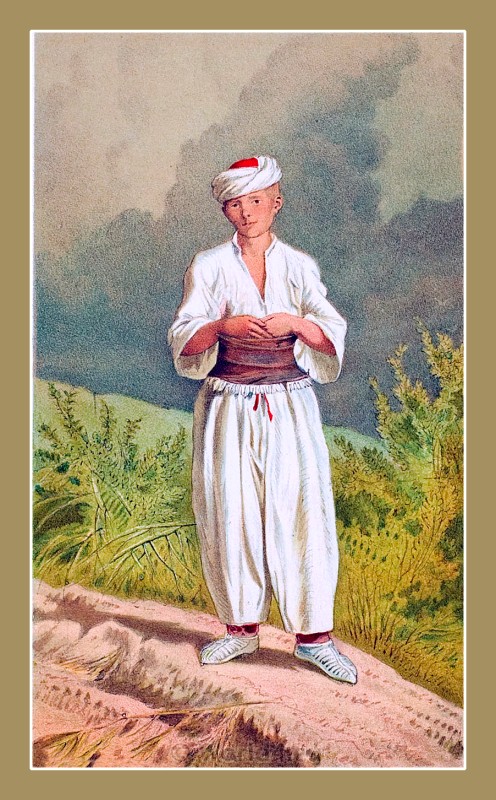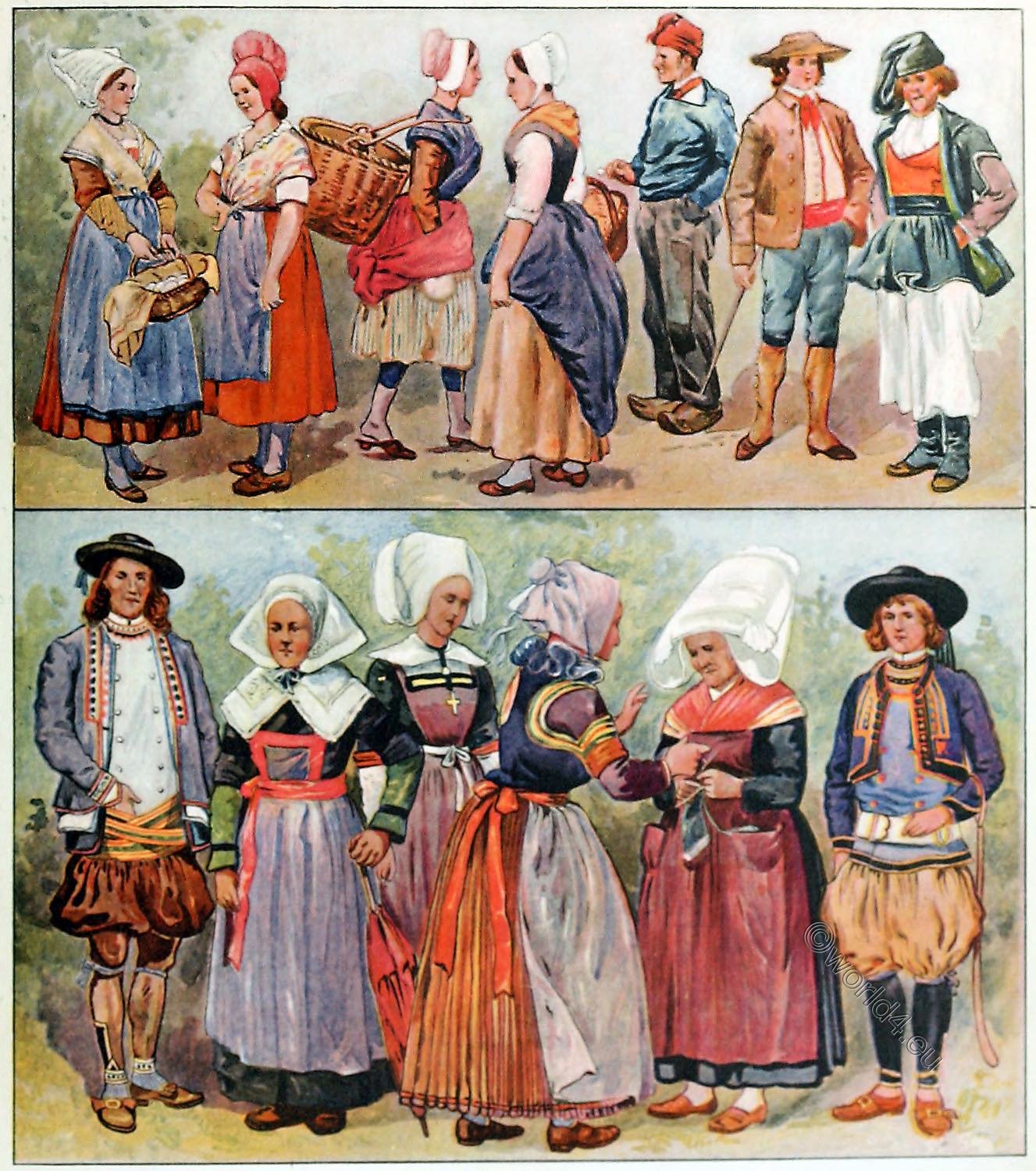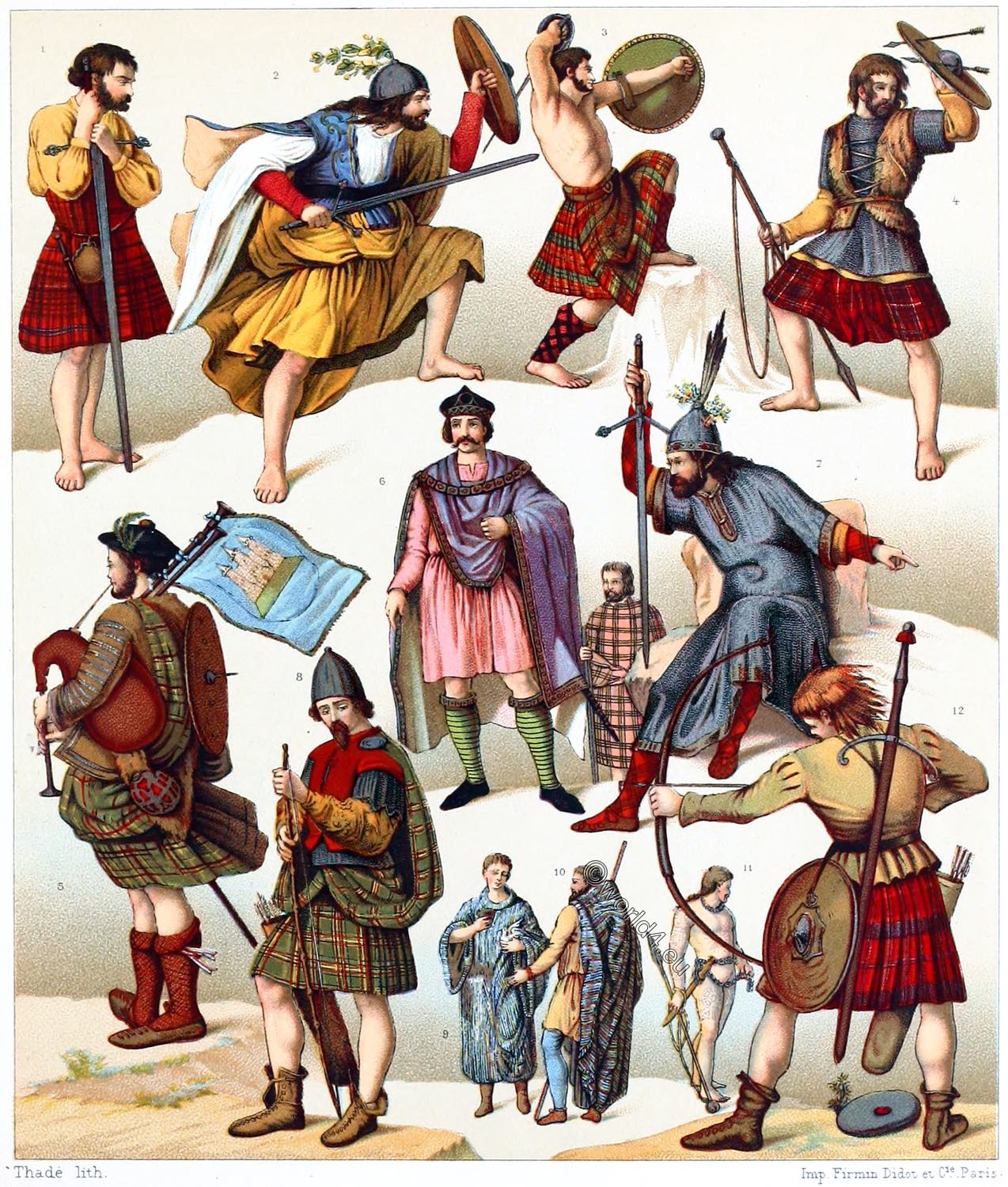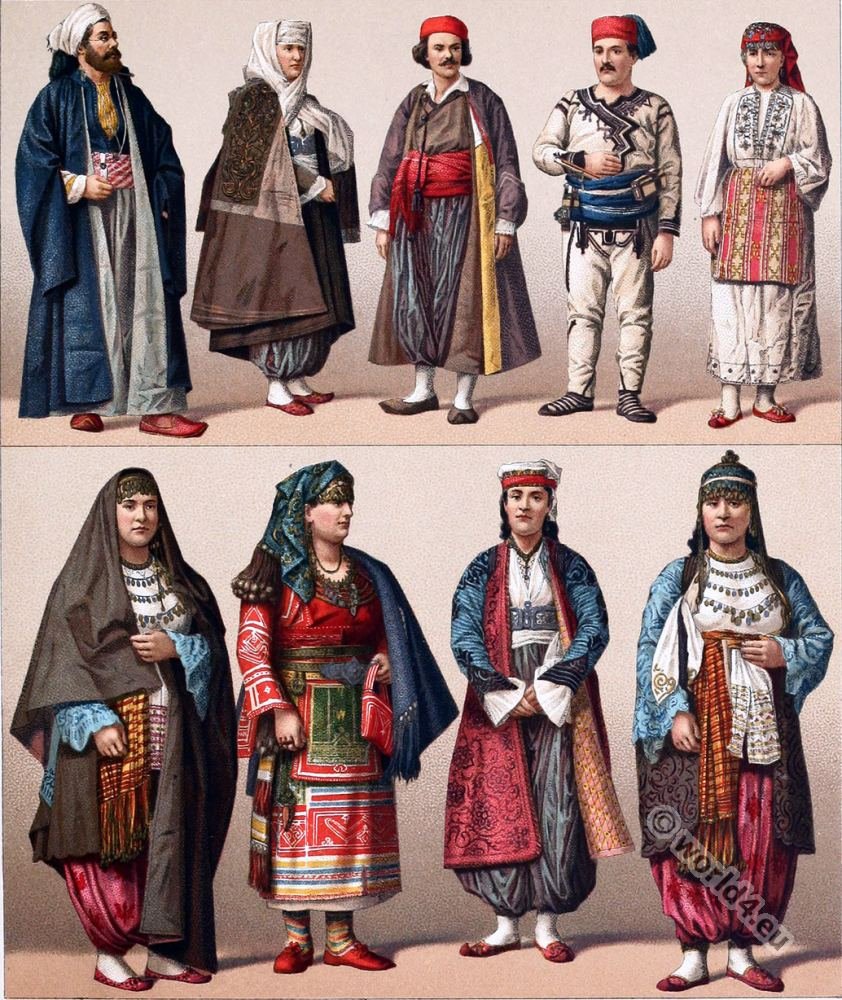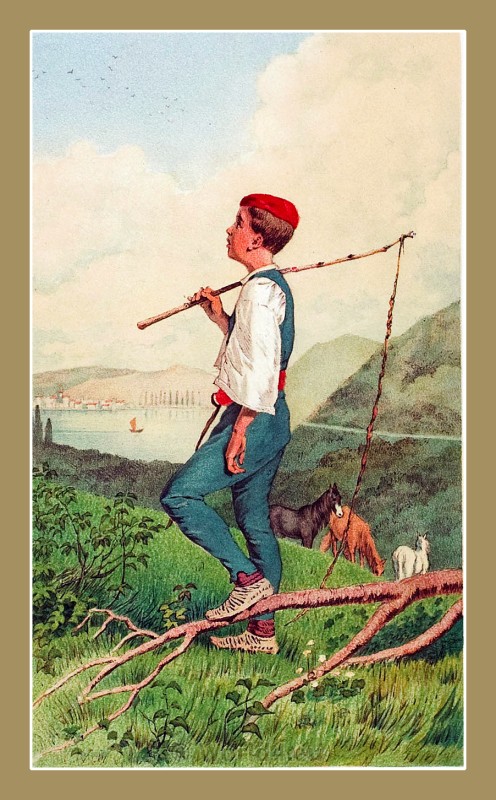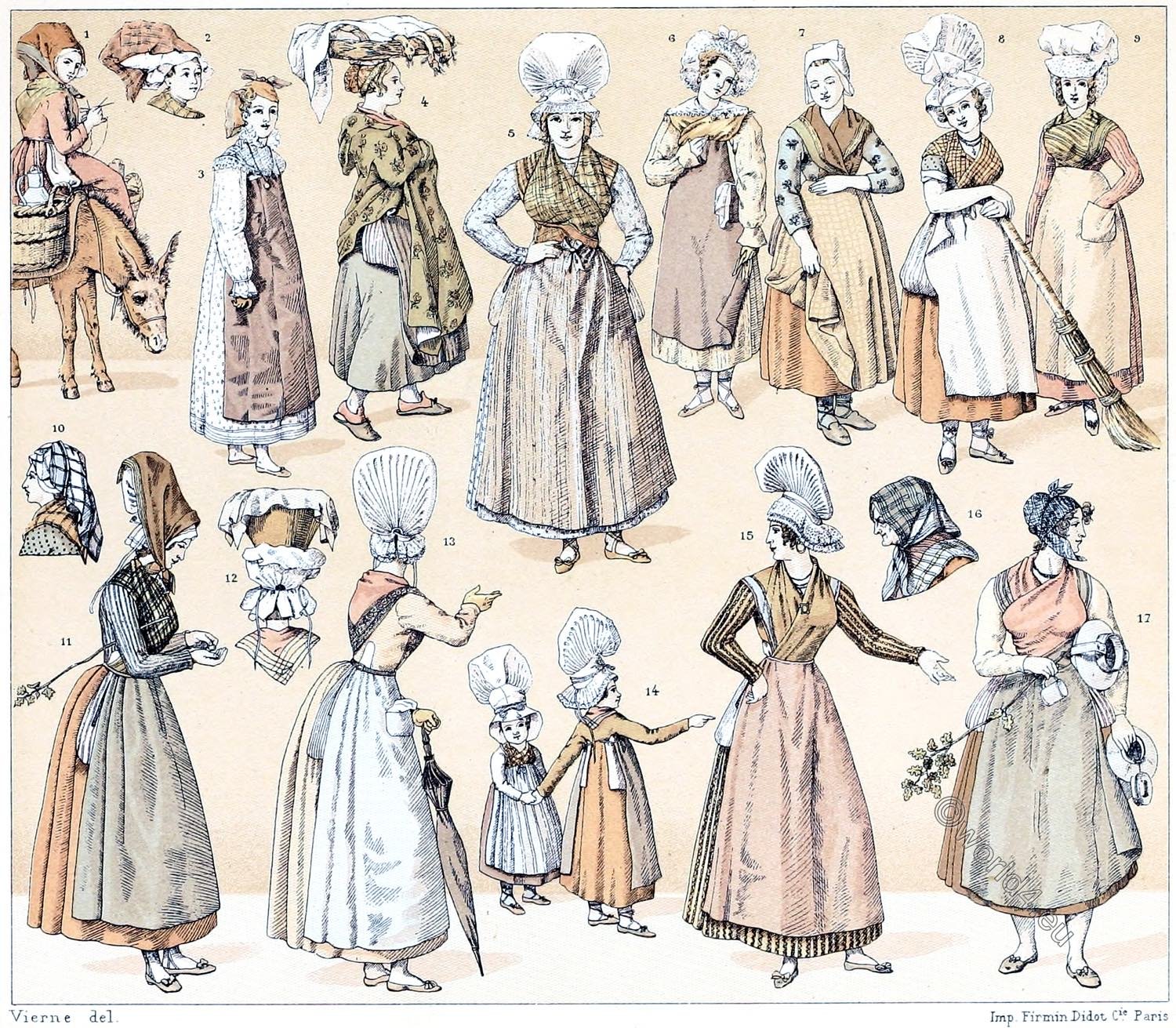
FRANCE. FOLK COSTUMES FROM THE BORDEAUX AREA.
FIRST HALF OF THE XIXTH CENTURY.
No. 1 – Milkmaid from Gradignan, Arrondissement Bordeaux. Brown headscarf. Bodice with cross-bound breastcloth, long pockets, worn over the skirt.
No. 2 – Shopkeeper from the Caudéran area.
No. 3 – Grisette *) from Bordeaux. Headscarf, neck ruffle, diced shawl, percale skirt, taffet apron, small clock hanging from the neck on a hair string, cut-out shoes.
No. 4. – Trader with poultry basket; a carrying pad protects the head. Headscarf, hooded cloak showing the apron and the long pockets of barchent. Footwear of cloth with over slippers.
No. 5 – Hökerin (market woman). Muslin bonnet with strongly overhanging bottom. Bodice with tight sleeves. Shawl of calico and muslin breastcloth. Pockets on the outside of the skirt; striped apron. Escarpins.
No. 6 – Grisette. Blonde cap, trimmed with white silk. Velvet bow in hair, folded ruff. Small shawl of flock silk, linen skirt. Taffeta apron, ribbon shoes.
No. 7 – Young girl from Laroque, Bordeaux arrondissement. Weekday bonnet, bust shawl over blue bodice, checked apron, pockets of red-striped percal.
No. 8 – Fille de peine (girl of everything). State muslin bonnet, necklace with gold cross à la Jeannete; plaid breast shawl, apron, barchen pockets, ribbon shoes.
No. 9 – Portanière (woman of the people) in Sunday costume. Muslin bonnet with embroidered tulle border, breast cloth; apron with large pocket, pink skirt.
No. 10 – Woman from Blaye. Headscarf over flat bonnet.
No. 11 – Milkmaid from Caudéran. Over the batiste cap a beamer headscarf. Calico shawl and muslin neckcloth. The bodice open at the sides so that the shirt can be seen.
No. 12 – Baked apple seller. Similar headdress,
No. 13 – Market woman of Bordeaux in Sunday costume. High muslin bonnet with small loose ribbons. Breast shawl, crossed over the bodice which is open at the sides; blue apron; cut-out shoes.
No. 14 – Little Caudéran girls. Wide bonnet bent over in front, shawl over a bodice differing in colour from the skirt, pockets, apron, ribbon shoes.
No. 15 – Market woman. Muslin bonnet, earrings, triple collar; calico breastcloth and muslin neckcloth, held in the centre by a square broche; apron. Escarpins with bow.
No. 16 – Woman of the people. Over the bonnet a calico headscarf; small shawl covering a ratiné bodice.
No. 17 – Milkmaid from Pessac, Arrondissement Bordeaux. Headscarf knotted at the top; tightly enclosing a white bodice; long percale pockets over black skirt, escarpins.
Nos. 1, 2, 3, 4, 6, 7, 8, 9, 10, 12, 14 and 16 from the collection of the various costumes of the inhabitants of Bordeaux and the surrounding area, by de Galard and Géraurd; Bordeaux, 1818-1819.
Nos. 5, 11, 13, 15 and 17 from the Costumes des femmes de Hambourg, du Tyrol, de la Hollande etc., by Lanté and la Mésangère, Paris, 1827.
Cf. on the text: Saint-Sauveur, Voyage à Bordeaux et dans les Landes, an VI (1798). – Bernadau, Tableau de Bordeaux, 1810; – Ducorneau and Monteil, la France nationale, 1844.
*) In 19th century French literature, the term grisette referred to a young, unmarried woman of low status, usually from the upper reaches of the lower class, who earned her living independently as a cleaner, but also as a seamstress (midinette), laundress or factory worker. She lived alone, without the supervision of her parents, which was considered unconventional in that era. The name derives from a grey, cheap and hard-wearing woollen fabric called grisette, which they often wore as a dress and which they could also afford from their low earnings.
Source: History of Costume in Chronological Development by Auguste Racinet. Edited by Adolf Rosenberg. Berlin 1888.
Related
Discover more from World4 Costume Culture History
Subscribe to get the latest posts sent to your email.

